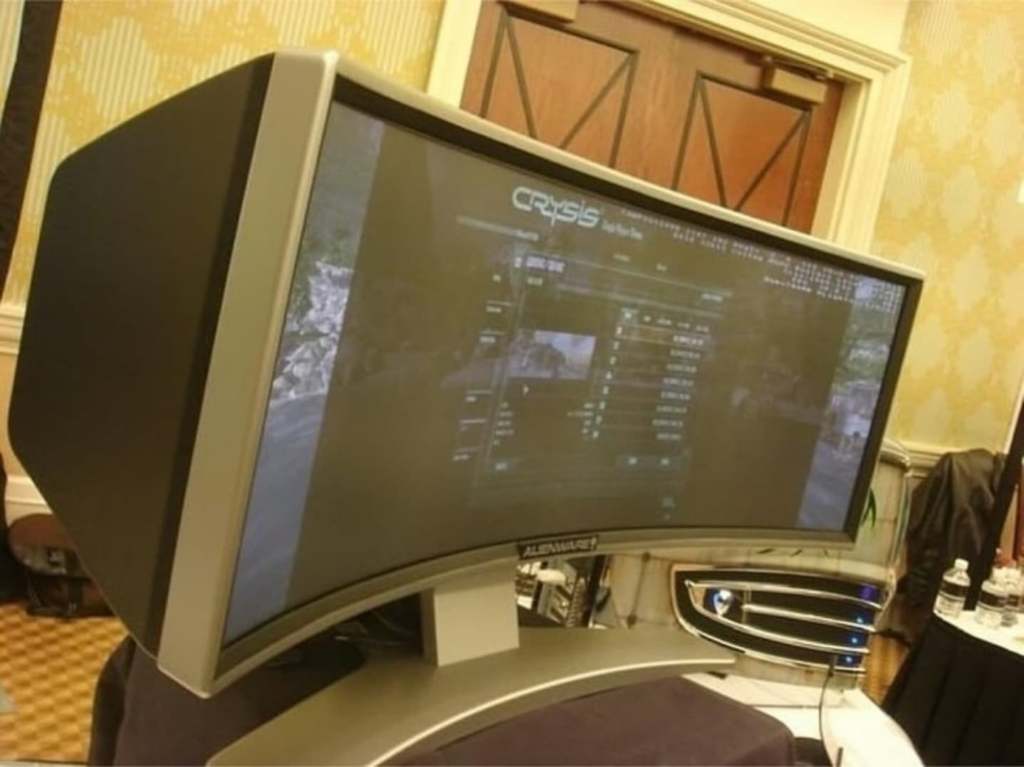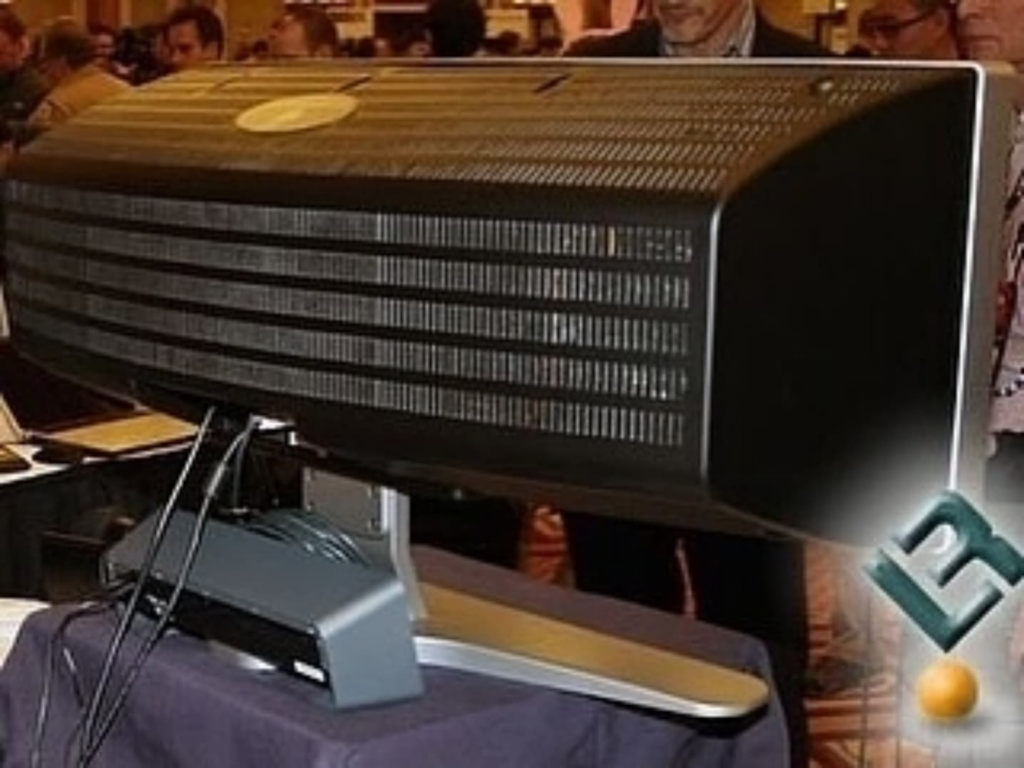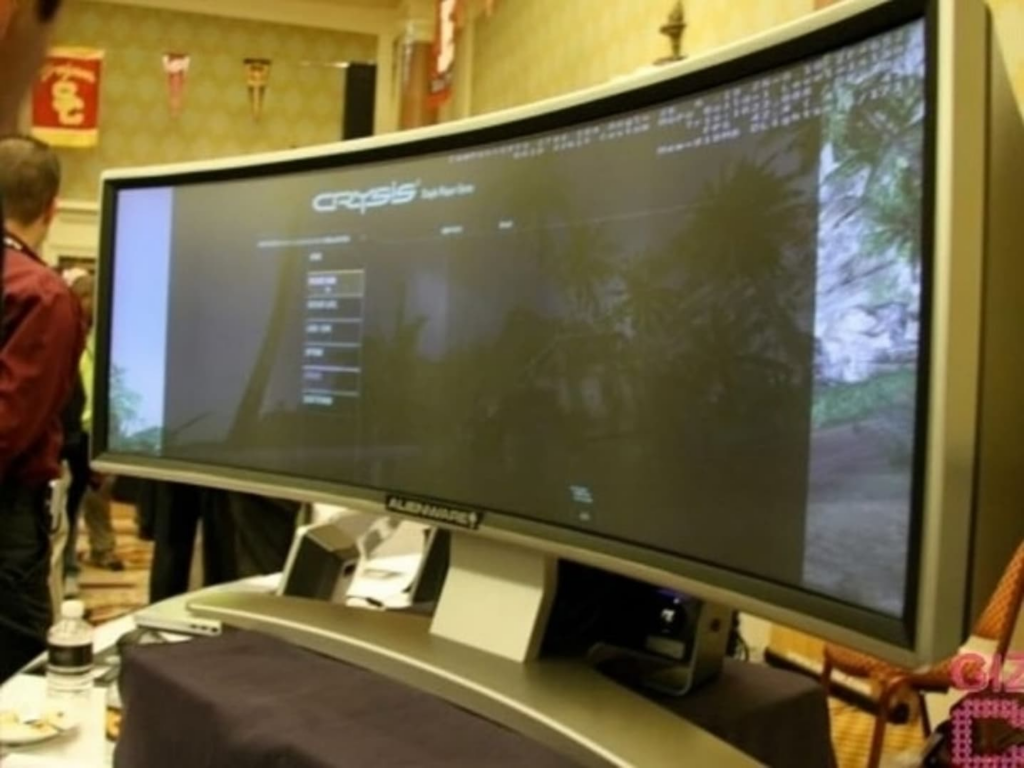
A Head-Turning Display Ahead of Its Time
Back in 2008, Alienware stunned the tech world by unveiling a 49-inch ultrawide curved monitor that pushed the boundaries of gaming displays. Unlike today’s OLED or LED panels, this futuristic monitor used rear-projection DLP technology, delivering a resolution of 2,880 x 900 pixels and an ultra-fast 0.02ms response time.

Designed for Immersive Gaming
The monitor’s dramatic curve was engineered to enhance immersion, giving gamers a wider field of view and reducing the need for multiple-screen setups. It was particularly appealing to racing, flight simulator, and FPS gamers, who benefited from a broader perspective without the distraction of bezels.
Key specs included:

- 49-inch ultrawide curved screen
- DLP rear-projection technology
- 2,880 x 900 resolution
- 0.02ms response time
- Multi-projector system for seamless visuals
Why It Never Became Mainstream
Despite the hype, Alienware’s ultrawide curved monitor never hit mass production. The high cost, bulky rear-projection design, and advancements in LCD and LED technology made it less practical for the average gamer. By the time curved displays became mainstream in the 2010s, OLED and high-refresh-rate LCD panels had already taken over.
A Pioneer in Gaming Display Innovation
While this 2008 Alienware monitor may not have become a household staple, it paved the way for modern ultrawide gaming monitors like the Samsung Odyssey G9 and Alienware’s own 49-inch QD-OLED monitor. It remains a testament to Alienware’s visionary approach in pushing the boundaries of gaming technology.